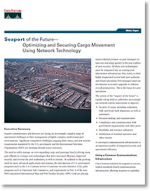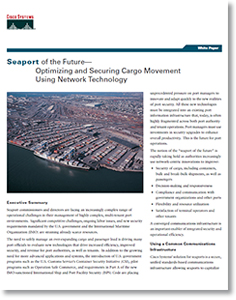Seaport of the Future - Optimizing and Securing Cargo Movement
If seaport tenants cannot safely and efficiently operate their businesses, including moving cargo on and off ships, repairing vessels, and ensuring that ships are adequately supplied, it is the seaport that will ultimately suffer through lost business as shippers move to other ports and volume declines.
Seaport commissioners and directors are facing an increasingly complex range of operational challenges in their management of highly complex, multi-tenant port environments.
Significant competitive challenges, ongoing labor issues, and new security requirements mandated by the U.S. government and the International Maritime Organization (IMO) are straining already scarce resources.
The need to safely manage an ever-expanding cargo and passenger load is driving many port officials to evaluate new technologies that drive increased efficiency, improved security, and revenue for port authorities, as well as tenants.
In addition to the growing need for more advanced applications and systems, the introduction of U.S. government programs such as the U.S. Customs Service’s Container Security Initiative (CSI), pilot programs such as Operation Safe Commerce, and requirements in Part A of the new IMO-sanctioned International Ship and Port Facility Security (ISPS) Code are placing unprecedented pressure on port managers to innovate and adapt quickly to the new realities of port security.
All these new technologies must be integrated into an existing port information infrastructure that, today, is often highly fragmented across both port authority and tenant operations.
Port managers must use investments in security upgrades to enhance overall productivity.
This is the future for port operations.
The notion of the “seaport of the future” is rapidly taking hold as authorities increasingly use network-centric innovations to improve:
- Security of cargo, including containers, bulk and break-bulk shipments, as well as passengers
- Decision-making and responsiveness
- Compliance and communication with government organizations and other ports
- Flexibility and resource utilization
- Satisfaction of terminal operators and other tenants
A converged communications infrastructure is an important enabler of integrated security and operational efficiency.
What’s Related




Favorites





